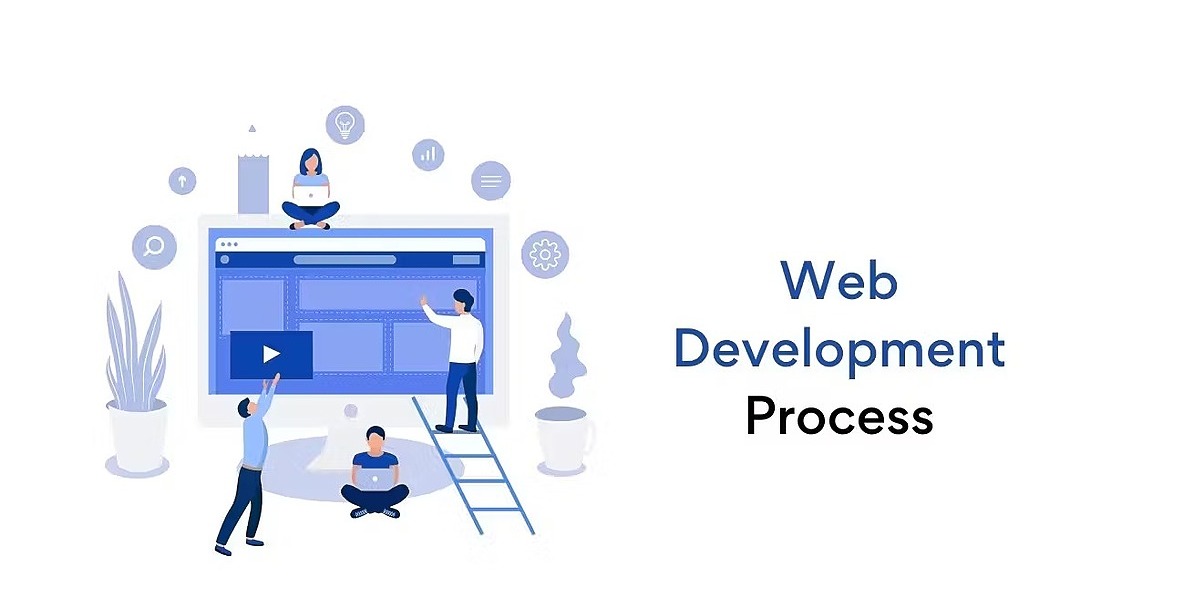
Website Development Process: 6 Steps to Create a Responsive Website (2024)
Introduction
Responsive websites have become a cornerstone of modern web development in Sydney, crucial for providing an optimal user experience across various devices and screen sizes. As the digital landscape evolves, ensuring that your website is responsive is paramount for staying competitive and engaging with your audience effectively.

Planning Stage
Defining Goals and Objectives
Before diving into the development process, it's essential to clearly define the goals and objectives of your website. Whether it's increasing brand awareness, driving sales, or providing valuable information, understanding what you aim to achieve will guide the entire development process.
Conducting Market Research
Market research plays a pivotal role in creating a successful website. By understanding your target audience, their preferences, and behavior, you can tailor your website to meet their needs effectively. Analyzing competitors can also provide valuable insights into industry trends and best practices.
Design Phase
Wireframing
Wireframing involves creating a skeletal outline of your website's layout, focusing on its structure and functionality. This step allows you to visualize the user journey and ensure intuitive navigation. By mapping out the placement of key elements and content, you can streamline the design process and facilitate collaboration between stakeholders.
Creating Visual Designs
Once the wireframe is finalized, the next step is to breathe life into the design with visual elements. From color schemes and typography to imagery and branding elements, every aspect of the design should align with your brand identity and resonate with your target audience. Creating visually appealing designs not only enhances the user experience but also reinforces brand credibility and trust.
Development Stage
Frontend Development
Frontend development involves translating the visual designs into functional web pages using HTML, CSS, and JavaScript. It's crucial to ensure that the website is not only visually appealing but also highly accessible and user-friendly. Implementing responsive design techniques such as fluid grids and flexible images is essential for ensuring seamless responsiveness across devices.
Backend Development
While frontend development focuses on the user-facing aspects of the website, backend development deals with its functionality and data management. This involves setting up servers, databases, and server-side scripts to power dynamic features such as forms, databases, and e-commerce functionality. A robust backend infrastructure is vital for delivering a seamless user experience and supporting future scalability.
Testing and Optimization
Cross-browser and Device Testing
Testing is a critical phase of the website development process in Sydney, ensuring that the website performs flawlessly across different browsers and devices. From desktop computers and laptops to smartphones and tablets, your website should adapt seamlessly to varying screen sizes and resolutions. Conducting comprehensive testing across multiple devices and browsers helps identify and address any compatibility issues early on.
Performance Optimization
Optimizing website performance is essential for delivering a fast and seamless user experience. This involves optimizing code, compressing images, and minimizing server requests to reduce page load times. Implementing techniques such as lazy loading and browser caching can further enhance performance and ensure smooth navigation, especially on mobile devices with limited bandwidth.
Launch and Maintenance
Deployment
After thorough testing and optimization, it's time to launch your website and make it accessible to the world. Deploying the website involves transferring it from a development environment to a live server, ensuring that all components function correctly in a production environment. It's essential to monitor the website closely during the initial launch phase to address any unforeseen issues promptly.
Ongoing Maintenance and Updates
Website development is an ongoing process, requiring regular maintenance and updates to ensure optimal performance and security. This includes monitoring website analytics, fixing bugs, updating content, and implementing new features or enhancements based on user feedback and industry trends. By staying proactive and responsive to evolving needs, you can maximize the longevity and effectiveness of your website.
In conclusion, creating a responsive website involves a systematic approach encompassing planning, design, development, testing, and maintenance. By following these six steps diligently and leveraging best practices in web development, you can create a responsive website that not only engages users but also drives tangible results for your business in the ever-evolving digital landscape of 2024.